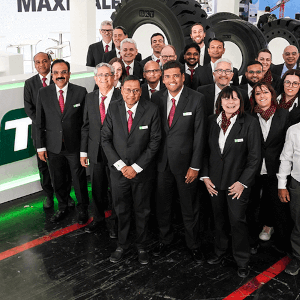In this day and age, sustainability is a worldwide priority. This is particularly the case within sectors that contribute harmful greenhouse gases into the atmosphere. The automotive sector is no exception: in 2023, you should expect to see more leaps and bounds towards sustainable mobility, as we strive to meet Net Zero. But what is sustainable mobility – and which forms are set to be trending this year?
In this day and age, sustainability is a worldwide priority. This is particularly the case within sectors that contribute harmful greenhouse gases into the atmosphere. The automotive sector is no exception: in 2023, you should expect to see more leaps and bounds towards sustainable mobility, as we strive to meet Net Zero. But what is sustainable mobility – and which forms are set to be trending this year?
What is Sustainable Mobility?
Put simply, sustainable mobility aims to ecologically transform transport by reducing fuel consumption and emissions, and increasing energy efficiency. Across the globe, transport is responsible for approximately a quarter of C02 emissions: a statistic which has been rapidly increasing year upon year. However, with sustainable mobility goals driving full speed ahead, this is set to decrease as we strive for a greener future.
In order to solve a problem, we must first identify the root of said problem. So, how exactly does the average car, for example, release harmful gases into the atmosphere? Gasoline contains carbon and hydrogen atoms; when burning, the carbon from this fuel reacts with the oxygen in the air to produce carbon dioxide – hence, the fossil fuels we all know and resent.
Modes of Transport: Ranked
Next, let’s take a look at different forms of popular transport – ranked from least to most sustainable. Many people are trying to cut down on their flights, for good reason. In 2023, planes remain the most environmentally unfriendly form of transport. And riddle us this – flying is the fastest growing source of greenhouse gases worldwide, yet only less than 20% of the world’s population have ever flown. This proves that a concentrated portion of the population are responsible for these CO2 emissions – and also proves that it is certainly possible to get by without flying. Whilst trains, for example, may be more time-consuming, switching your boarding pass for a train ticket will significantly reduce your carbon footprint. Next up, we have cars – which are responsible for 12% of all greenhouse gas emissions in Europe. However, the development of electric vehicles aims to reduce this significantly. Naturally, public transport such as trains and buses reduce people’s individual carbon footprint, and cover long distances efficiently. However, ranking in at no. 1 is cycling and walking: carbon-free, and healthy to boot!
We also need to factor in transport within different industries. In agriculture, for example, farmers tend to navigate the fields on their trusty tractors. Tractors are, indeed, high-performance machines, which take on hefty challenges and sizable areas – meaning that they require significant energy to produce power. However, tractors have one particular advantage: the amount of power used can be readily adjusted. This therefore means that farmers can take active steps to a more sustainable day-to-day life on the farm.
Going For Green
So, in 2023, how is mobility set to become more sustainable? Transport was a central topic at COP27, and there are global events dedicated to sustainable mobility - such as Global Mobility Call, which is taking place in September 2023. This is the only international event for sustainable mobility which connects all industries, and promises to lead the development of our sustainable future on the roads. Events like these are the ideal time for industry leaders to get together and discuss sustainable goals - and most importantly, strategize the most efficient and effective ways to implement them.
What’s more, the general public across the world are taking personal accountability for their travelling habits. In the UK, for example, over half the population pledged to use more sustainable transport in 2023, such as shared mobility, public transport and electric vehicles. This shift in attitude is also found in other countries across the globe, as the climate crisis takes its place at the forefront of our priorities. So, think about it: how could your daily commute to work be more sustainable? And could you switch that jet-setting holiday for a staycation?
As a tire manufacturer, BKT is well aware of our responsibility to pave the path of sustainable mobility, leading the progress in our industry. To discover all of our environmentally friendly endeavours over the last few decades - and beyond - take a look at the revamped Sustainability corner of our new and improved website.






